21 Jun 2022
Another Wires&Bytes webinar regarding the use of SlickLight for measurements and observation of Oil and Gas wells using retrievable fiber optic technology. OptaSense, our interrogator and software partner, will co-present the advances of data acquisition and measurements with the use of SlickLight cable.
24 Feb 2022
Watch Wires&Bytes webinar on the new innovative design of downhole well intervention cables — SlickLight-C (SlickLight with copper conductor) presented by Petar Basic, VP Technology, and Alex Sachivichik, Sales Manager
SlickLight-C combines the flexibility of traditional slickline with real-time downhole tool for management and communication, offering mechanical strength and features to cater traditional slickline and coiled tubing services. The electrical conductor provides bi-directional telemetry and power delivery for downhole tools enabling real time decision-making with existing surface equipment.
30 Jul 2021
At the beginning of July at Wires&Bytes test center a climatic test has been conducted to check the temperature resistance of Non-Metallic MultiSense. The test lasted for 6 hours, and the cable withstood 3 cycles of exposure to temperatures from -60°C to +85°C successfully.
This potentially means that Non-Metallic MultiSense can be used in different environments having almost no restrictions in outdoor installations. Particularly the cable can be buried in the ground or integrated into structures such as roads, concrete beams and slabs and withstand sub-zero temperatures while providing quality strain temperature and acoustic acquisition data. This time the cable samples were wound on a plywood spool. The second step of the planned climatic tests will be conducted with a loop of a cable.
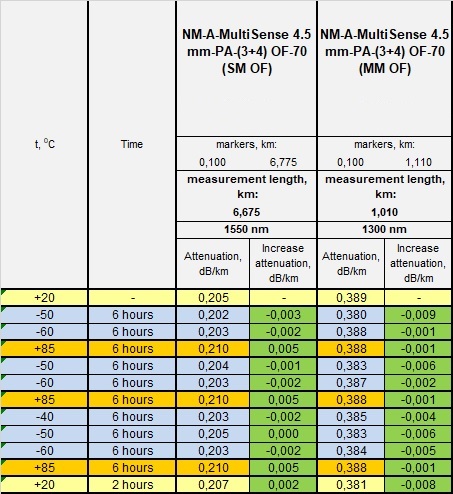
Non-metallic MultiSense is a design with a gel-filled central PBT loose tube with optical fibers freely placed inside with 4 tight-buffered optical fibers, FRP rods, and outer jacket suitable for all types of DFOS systems and distributed monitoring as well as for simultaneous multiple measurements along with fibers for data communication.
11 Aug 2020
A comparative test has been performed to check the acoustic sensitivity of different types of Wires&Bytes cables for vibroacoustic influences at our test center. The cables, including UniTEF, OPGW, metallic and non-metallic MultiSense designs were tested at different acoustic frequencies and their responses were recorded and observed using Distributed Acoustic System. Results obtained in the test show differences in acoustic performance of the cables when tested under the same conditions.
Introduction
The objective of this study was to qualitatively test and determine acoustic performance of several cable designs, that are different in configuration and material used. The aim was to give users a better understanding of the acoustic performance of different designs, both standard and special, help them in selection of cables for different applications as well as set new goals for the development of new cable designs. For example, for a pipeline leak detection, where high frequency response is required for the deployed cables, positioned at some distance from the pipe, the right cable selection will ensure optimum monitoring. Another example would be selection of fully dielectric cables deployed along electrically powered railways, where the use of metallic designs raises significant safety issues limiting deployment in many countries around the world.
Test set-up
The test procedure involved building a specific cable-acoustics test bench (Fig. 1) and acquisition of different acoustical equipment including phase-sensitive DAS equipment.
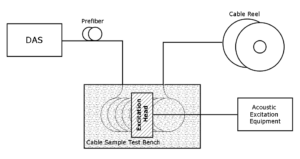
Fig. 1: Acoustic Test Set Up for FO Cables
The cable sample is sandwiched between two soft material panels, acoustically excited from the top (Fig. 2) and interrogated with commercial DAS equipment. Laser pulse repetition rate used (LPRR) was 10 kHz with gauge length set to 16m.
Fig. 2: Cable Sample Test Bench for Acoustic Response Evaluation; (a) completed bench with loaded sample, (b) sample laying inside the bench, (c) mounting of excitation head
Fig. 3 Cables Samples tested
Only sinusoidal signals from both loudspeaker and subwoofer were used in the test. Acoustic signal frequencies recorded on each cable were: 40, 80, 160, 320, 640, 1280, 2560Hz – all multiples of 40 Hz to avoid possible interference with 50 Hz from the power supply network. Cables with the range dimensions, masses, configuration, and chemical compositions were sampled and used in the test.
Results
It is evident that cable characteristics such as mass, design, and fiber configuration and integration play an important role in acoustic response. Low frequency perturbation tends to have stronger impact than the higher frequencies.
To process signals at each of the frequencies, a narrow-band filter with a width of ± 5% of the signal frequency was used to eliminate ambient noise outside the studied frequency band (Fig. 4).
Fig. 4: Reconstructed signal value for different frequencies and cables
Conclusions
The results obtained in this test suggest that cable design can significantly contribute towards the performance of fiber optic sensing systems and their successful deployment and exploitation in the industry. The same level of response is expected when measuring strain. System designers need to take cable designs into consideration especially when a single cable should have mixed and multipurpose sensing features.
15 May 2020
The Specialty Cables for Oil & Gas require a stringent testing protocol before they are deployed in challenging applications.
Particularly, the cables used to monitor leaks for LNG pipelines and tanks need a well-defined qualification procedure. These cables are exposed to the harsh cryogenic temperature conditions and any underrated cable can fail to detect leaks and cause huge damages to human life and infrastructure.
Two cables design were tested in our testing facility. These cables were exposed to cryogenic temperatures (down to -170°C) in 4-hours cooling process and after it let warm up passively to the room temperature. The test results have shown no significant loss in optical fiber performance. Polyimide coated fiber was used in these cables.
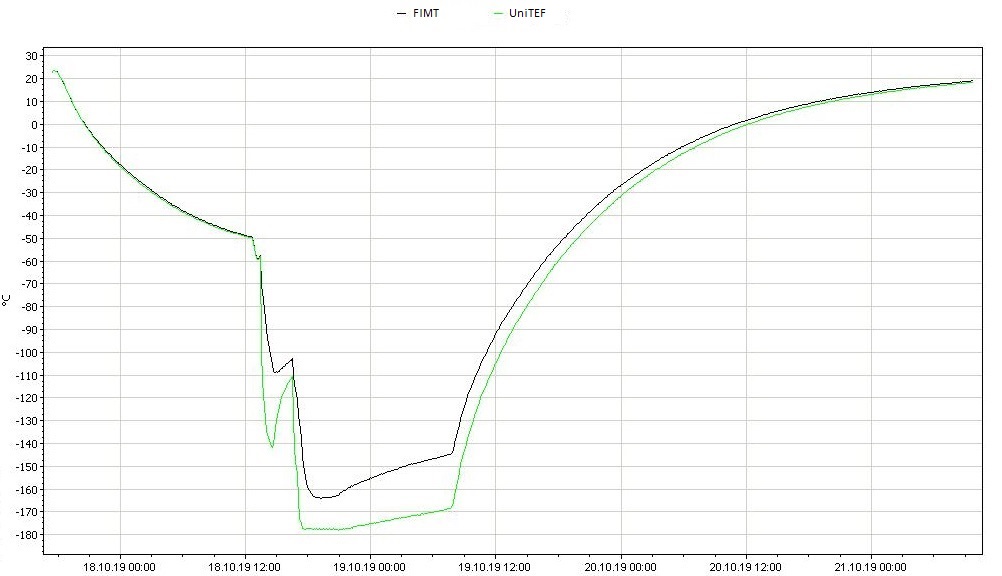
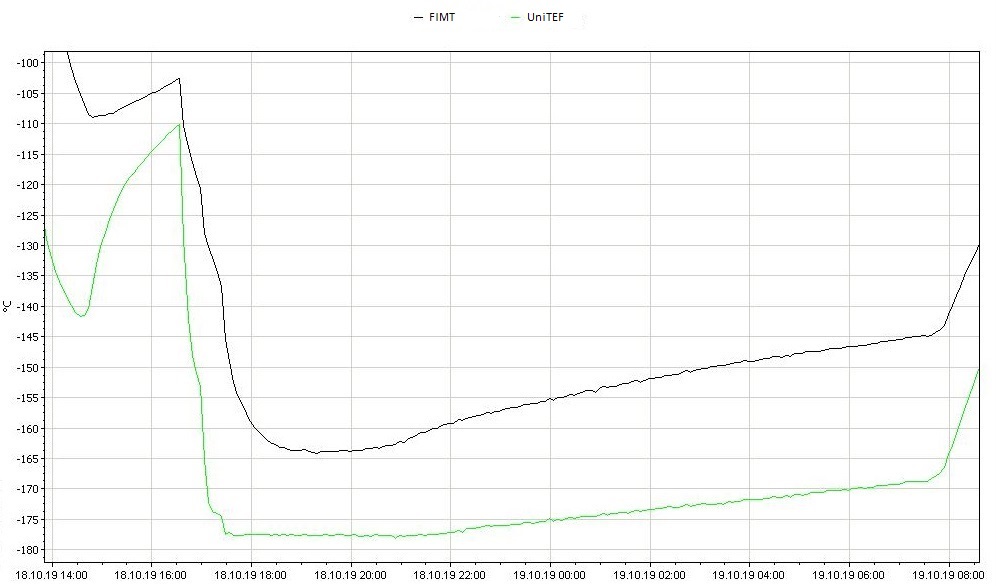
Fig. 1 and 2: full and close up view charts of Samples 1 and 2
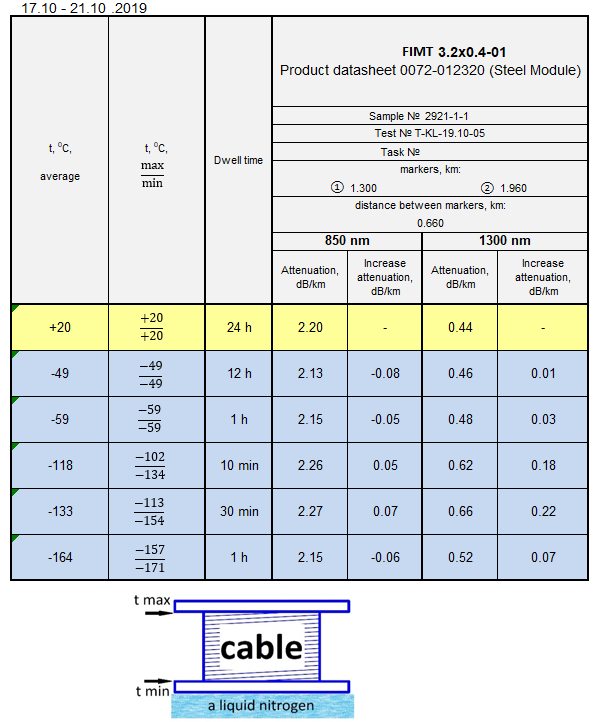
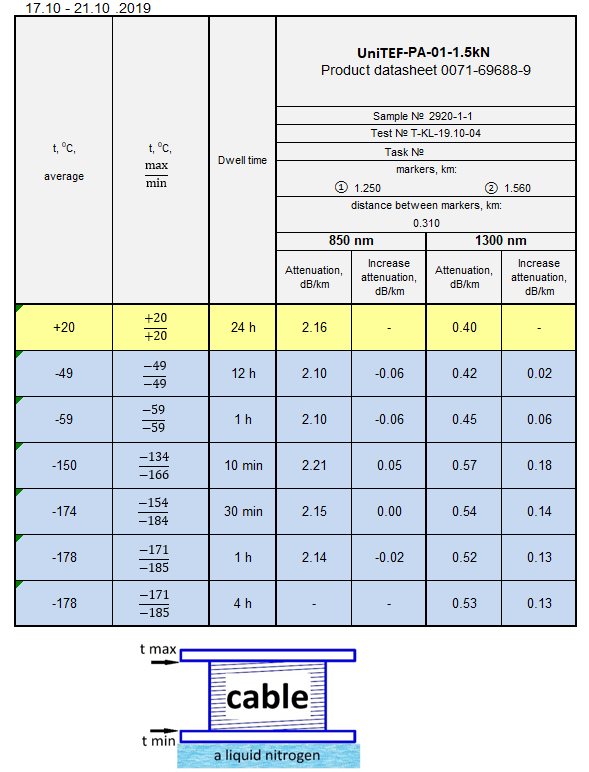
Fig. 3 and 4: Test results of Sample 1 and 2
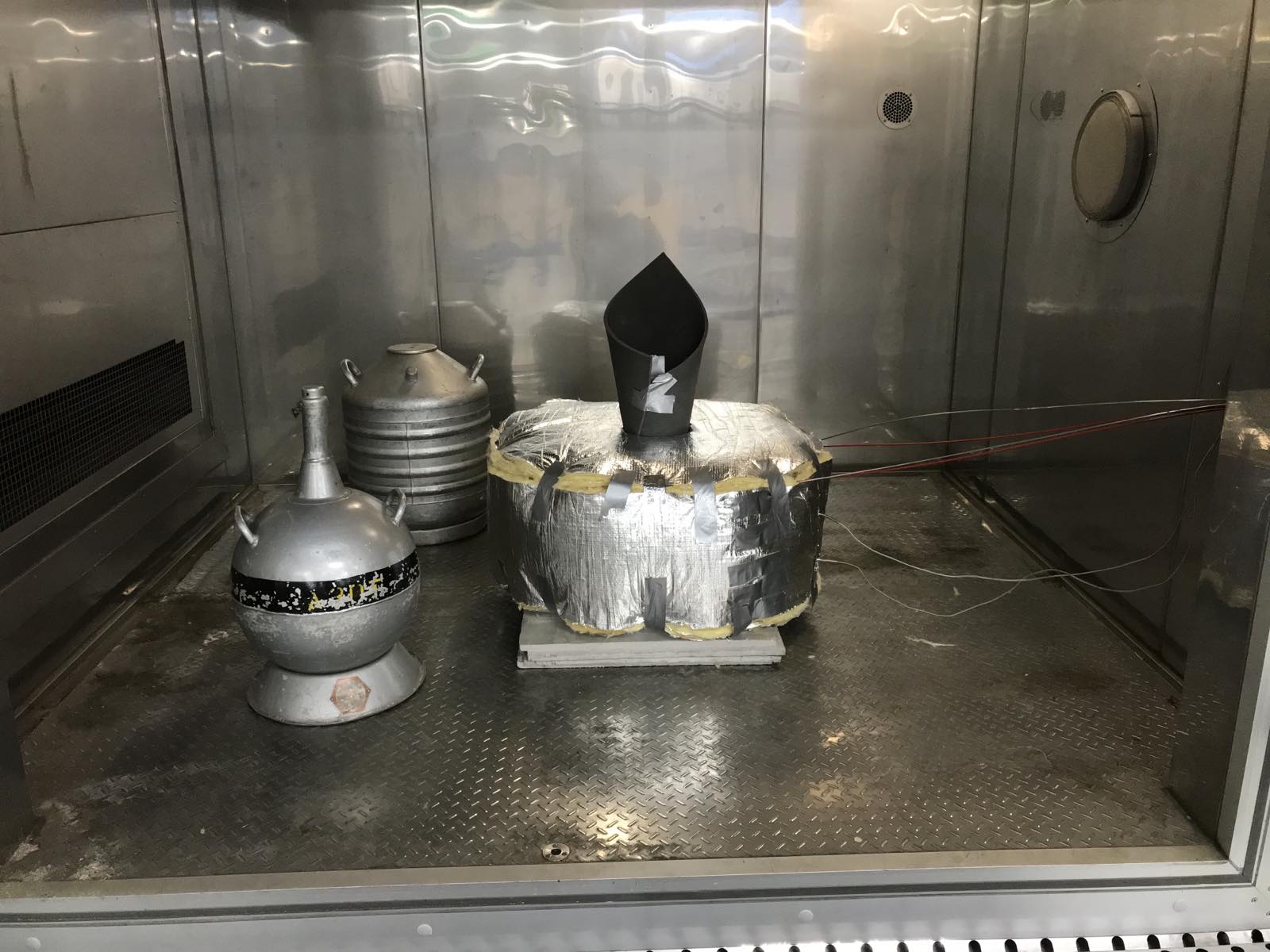
Fig. 5: Optical loss test set-up at cryogenic temperatures